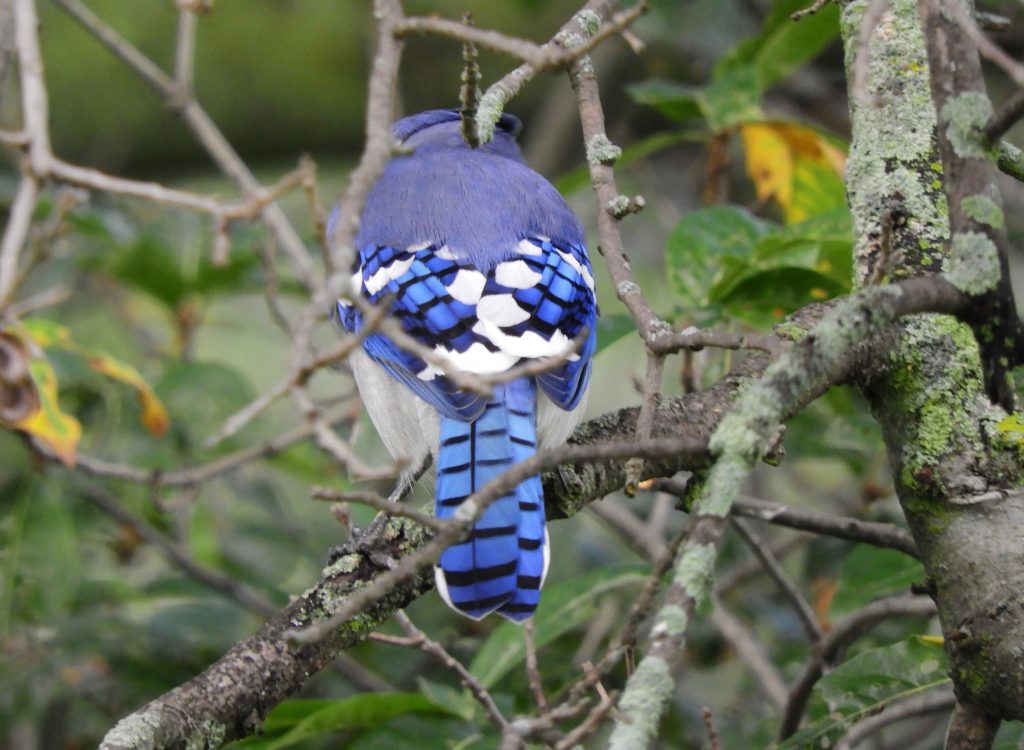October 6 2019. Royal Botanical Gardens Arboretum, Hamilton, ON. Several years ago, I agreed to show a South African visitor some of our local bird life. I think it was around mid-summer when birding can be a bit slow, the visitor was unknown to me and I had no idea of the depth of her birding experience. I needn’t have worried, she was eager to learn, knew enough to latch on quickly and we passed a rewarding morning. My most vivid memory of her though was of her flabbergasted reaction when she focussed her binoculars on a Blue Jay for her first time, “What a gorgeous bird!” she exclaimed – repeatedly.
I remembered her astonished reaction today as I witnessed a huge morning flight of migrating Blue Jays. They were flying from east to west across the tree-dotted fields of the arboretum. I stopped counting at 74 because they were all around me, a moving target of new birds coming from the east, much sociable back and forth, some passing overhead heading straight towards the forests and others just milling around. Any total count would have been a crazy guess.
I stopped to watch while many of them (perhaps 10 or 20) excitedly fed on the acorns of a couple of specimen Shingle Oaks. There was a non-stop clamour of jays coming to these two trees to feed, an endless feast although I couldn’t be sure if it was the same few birds feeding, leaving and returning or whether there was a constant stream of new arrivals feeding for a few minutes and then moving on. In any event, the feeding was still going on two hours later on the return leg of my morning transect.
The flight was a spectacle of its own but the choice of food curious: there are many Red, Black and Pin Oaks in the arboretum, all bearing acorns, yet the jays were favouring the Shingle Oaks, a more southern oak that does not occur naturally in Ontario. Does the smaller size of Shingle Oak acorns make them easier to deal with? Is Shingle Oak tastier and do birds have a sense of taste anyway? Maybe. They were extracting the meat rather than gulping them down the way European Jays do with the large acorns of English Oaks.
And, as that South African guest noted, what a gorgeous bird.



